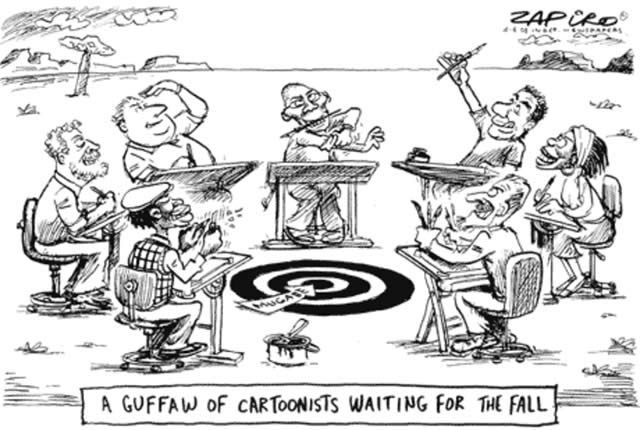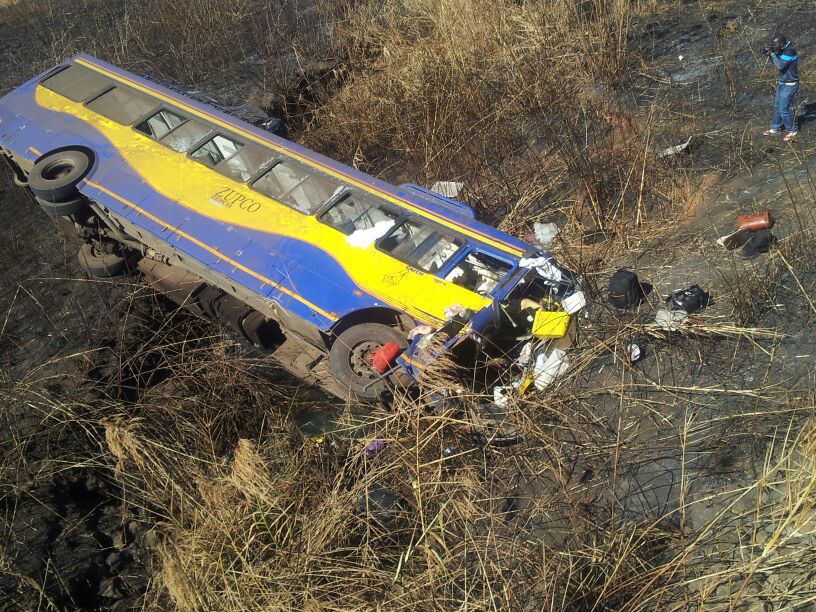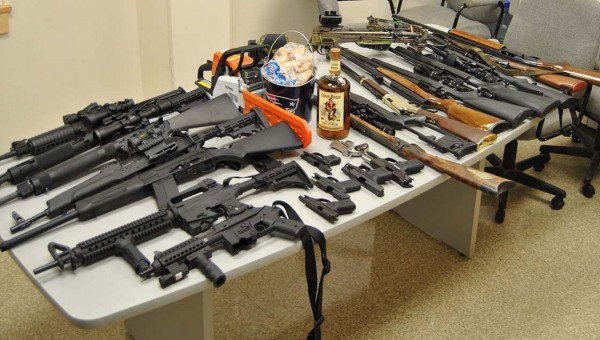When political cartoons become personal


Some cartoonists such as Zapiro from South Africa, opposed to President Mugabe’s rule, have been waiting to celebrate his fall for a long time
Knowledge Mushohwe
Political cartoonists do not have comfort zones. Their work has to drift into new territories and display their dexterity everyday if they are to retain their relevance. Floating around different subject matter, they can aim for anything from light relief to highlighting serious issues
affecting communities.
And as they present their work to the wider public, they accept that the reaction from readers may vary.
While they are able to make one reader roar with the laughter of sympathetic recognition, they have in them another ability to merely bemuse another who may either have little knowledge of the subject or fail to accurately read the combination of signs put together.
Political cartoons are a hit and miss affair — readers that understand and enjoy one political cartoon today may not be the same to give the next identical treatment.
The one thing that is for sure, however is that at least a significant percentage of the reading public “connects” with a political cartoon daily.
The reading public is presented daily with a political cartoon that may be “the most influential thing in the paper” and “just a joke”, and the varied range gives political cartoonists a special licence for use of provocative statements.
They exploit their licence in a range that may be placed on a spectrum that ranges from “not serious at all” at one end to “very serious indeed” at the other.
From their broad ranges, cartoonists tend to make a distinction between satire, where the cartoon seeks to make a significant point through humour or even attack and gags, where the joke is presented to simply entertain readers.
Every professional in this field is fully aware that there is need to balance the two.
One cannot be a “specialist” in presenting too much satire, especially if it is too consistent; a cartoonist runs the risk of losing the interest of readers.
Too many gags may make a cartoonist a mere entertainer, not taken seriously and wasting an opportunity to do some good in public life.
Gag cartoons have also become “hiding places” for political cartoonists that may be reluctant to sink their teeth into serious issues, particularly in polarised societies.
But every political cartoonist worth his salt cannot permanently shy away from the serious stuff.
Because political cartoons are seen as a mirror of all society, it becomes pointless for a social commentator to intentionally ignore the most serious subjects.
There is plentiful evidence throughout history that political cartoonists can get under the skin of even the most hardened politicians.
They have this uncanny ability to infuriate whoever they draw and amuse a large section of their readers through unflattering caricatures, irony and satire.
But even with seemingly unlimited ‘provocative’ licence, some form of control is still required.
There is a tendency by political cartoonists working for “anti-government” newspapers to work less as mirrors of society and more like political activists, angrily advocating for revolutions and directing thinly-veiled insults at political figures.
Political cartoons by such misguided artists degenerate into imprudent rumblings devoid of any humour or satire and laced with anger.
Political cartoons fail to serve their purpose if their objective shifts from being a commentary for and on behalf of readers but instead become a vehicle for the cartoonist’s own political statements.
It is in political cartoons’ nature to attack and one cartoonist, Mike Peters says, “Cartooning is not a fair art. You can never treat anyone justly. Most cartoonists like me — who like to attack — are the loaded guns”.
Another, Chicago Tribune cartoonist Jeff MacNelly is quoted as having said “many cartoonists would be hired assassins if they couldn’t draw”.
Though their arguments hint that editorial cartoons highlight the negative in an exaggerated way making fair representation of subjects impossible, this does not give the artists a licence to insult those whose political ideologies they do not support.
Political cartoons do not necessarily have rules or regulations but when one views some from the independent media, it becomes clear that the opinions in them are the kind that would normally come from opposition parties or their affiliates.
In that case, the notion that political cartoons mirror society disappears and is replaced by nothing but views fuelled by personal vendetta.
Writing a paper titled “Arab Political Cartoons”, Andreas Qassim objectively concludes that editorial cartoons may be conformist or subversive, politically correct or totally prejudiced, but they do not have any pretensions of being neutral and objective, like for instance the news media does.
But when political cartoons simply attack based on the creator’s prejudicial view of the subject, they fail to relate to the readers they are created for.
The purpose of political cartoonists is to be watchdogs, keeping power-holders honest and accountable by being as relatable as possible to the general public’s sentiment.
There is no room for the political cartoonist’s own emotional attachment in the development of newspaper art.








Comments